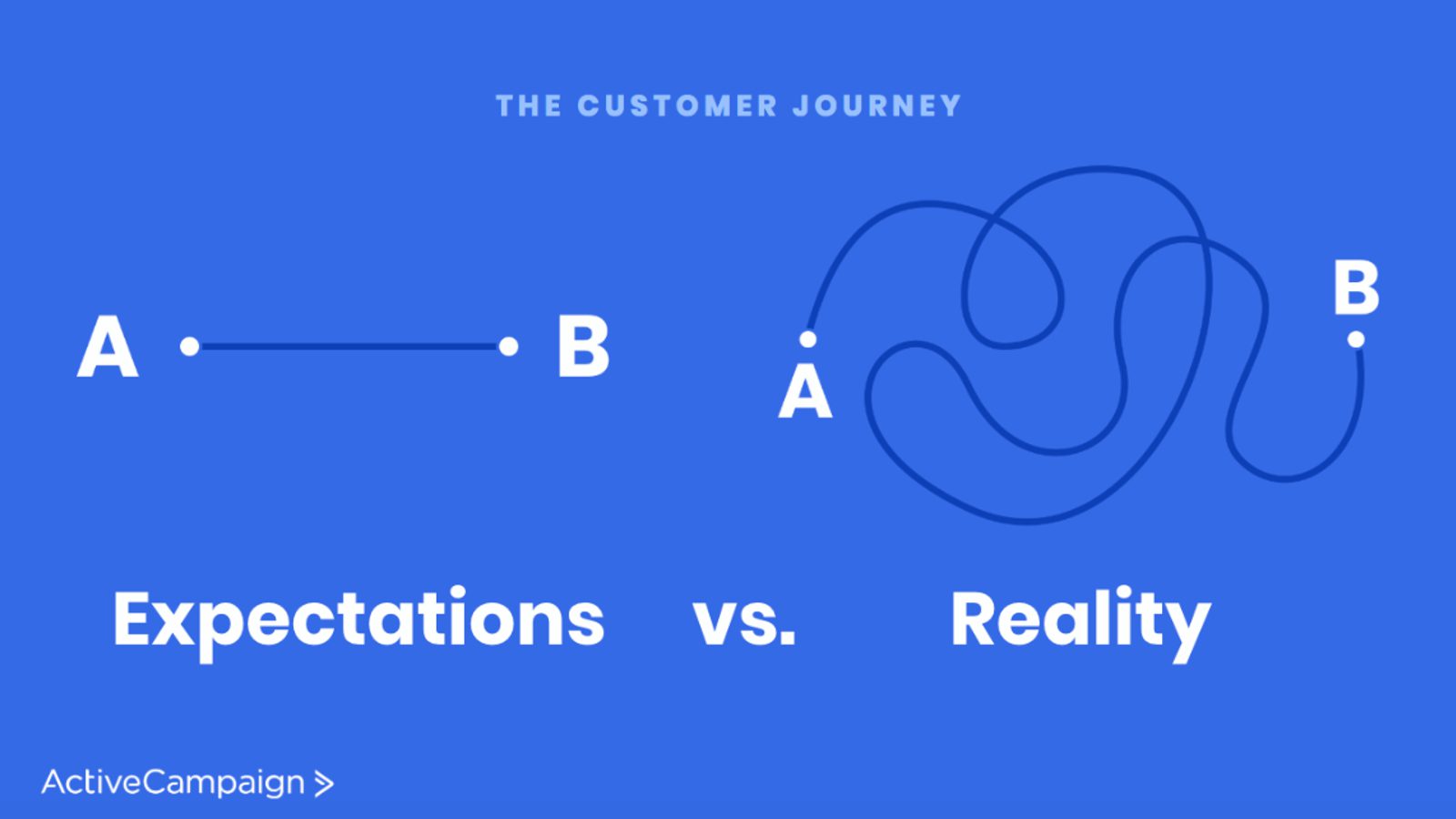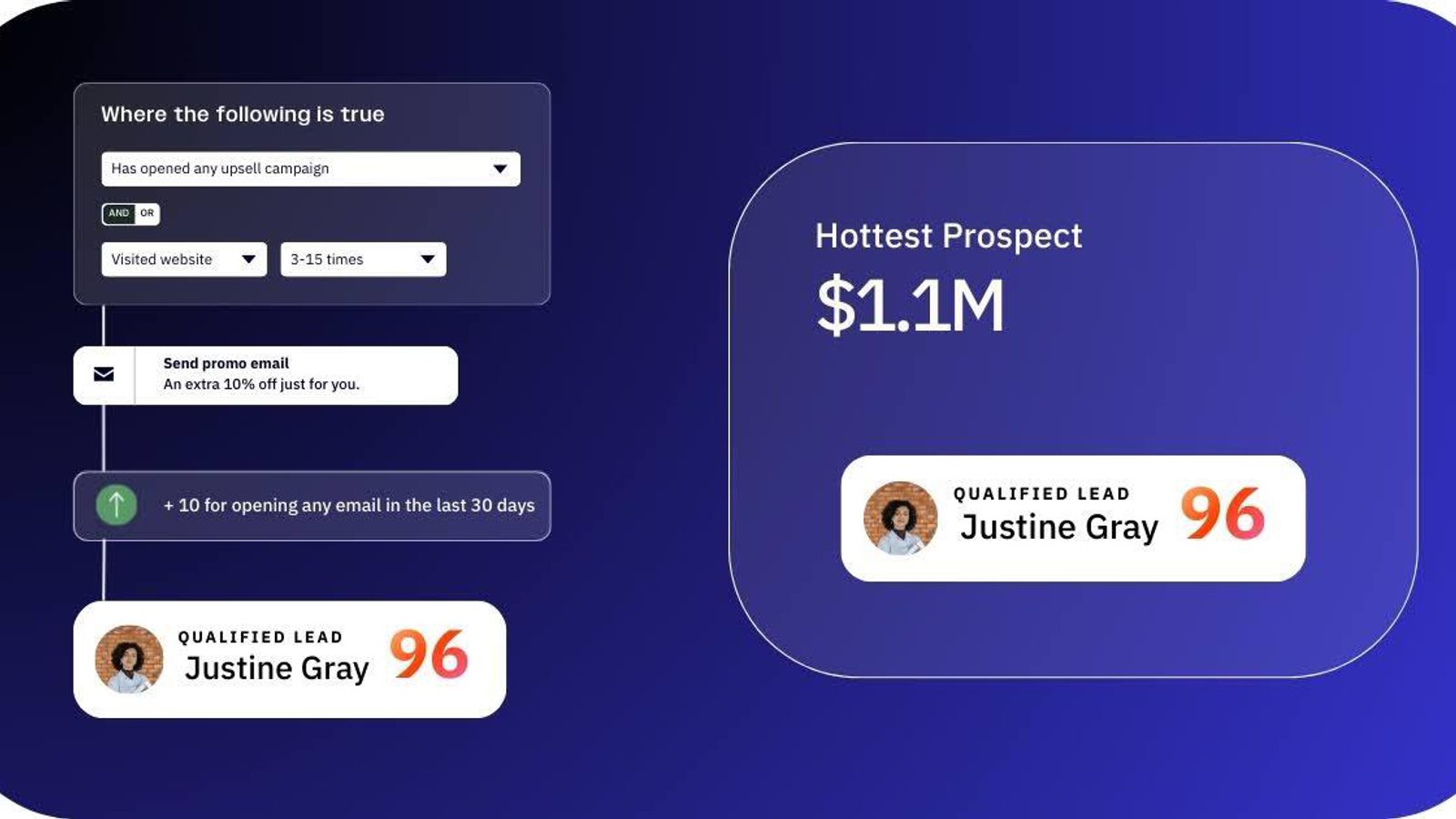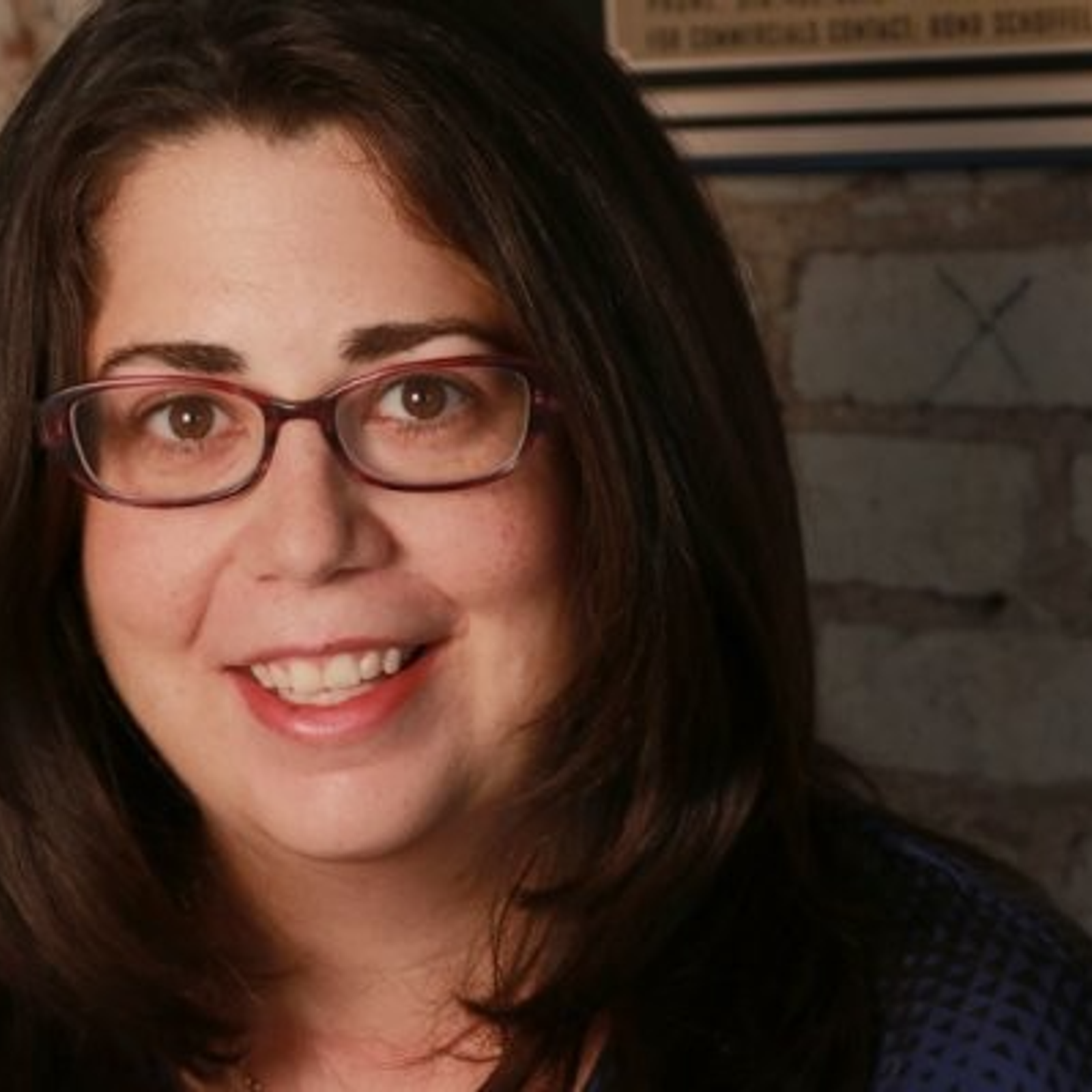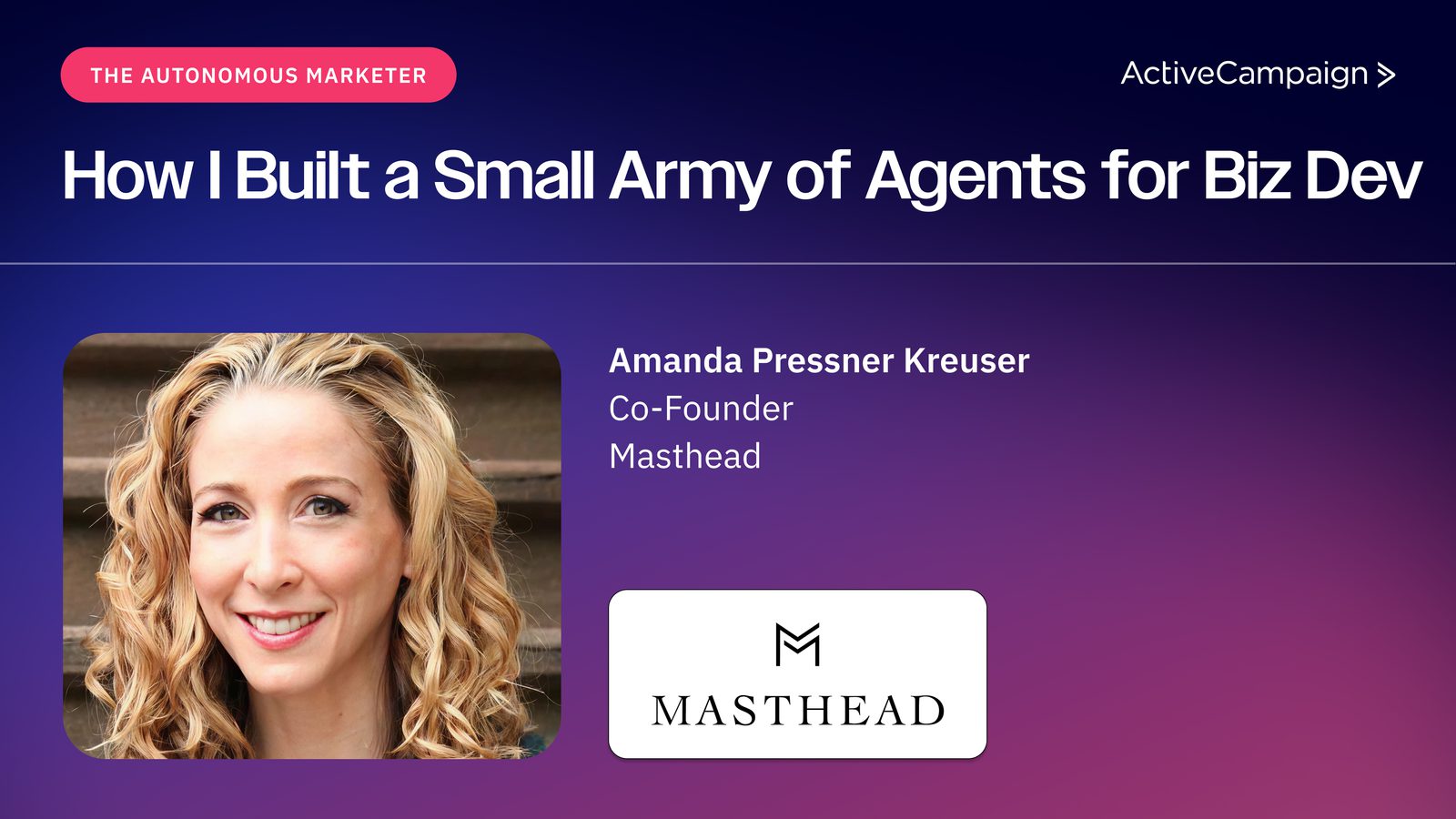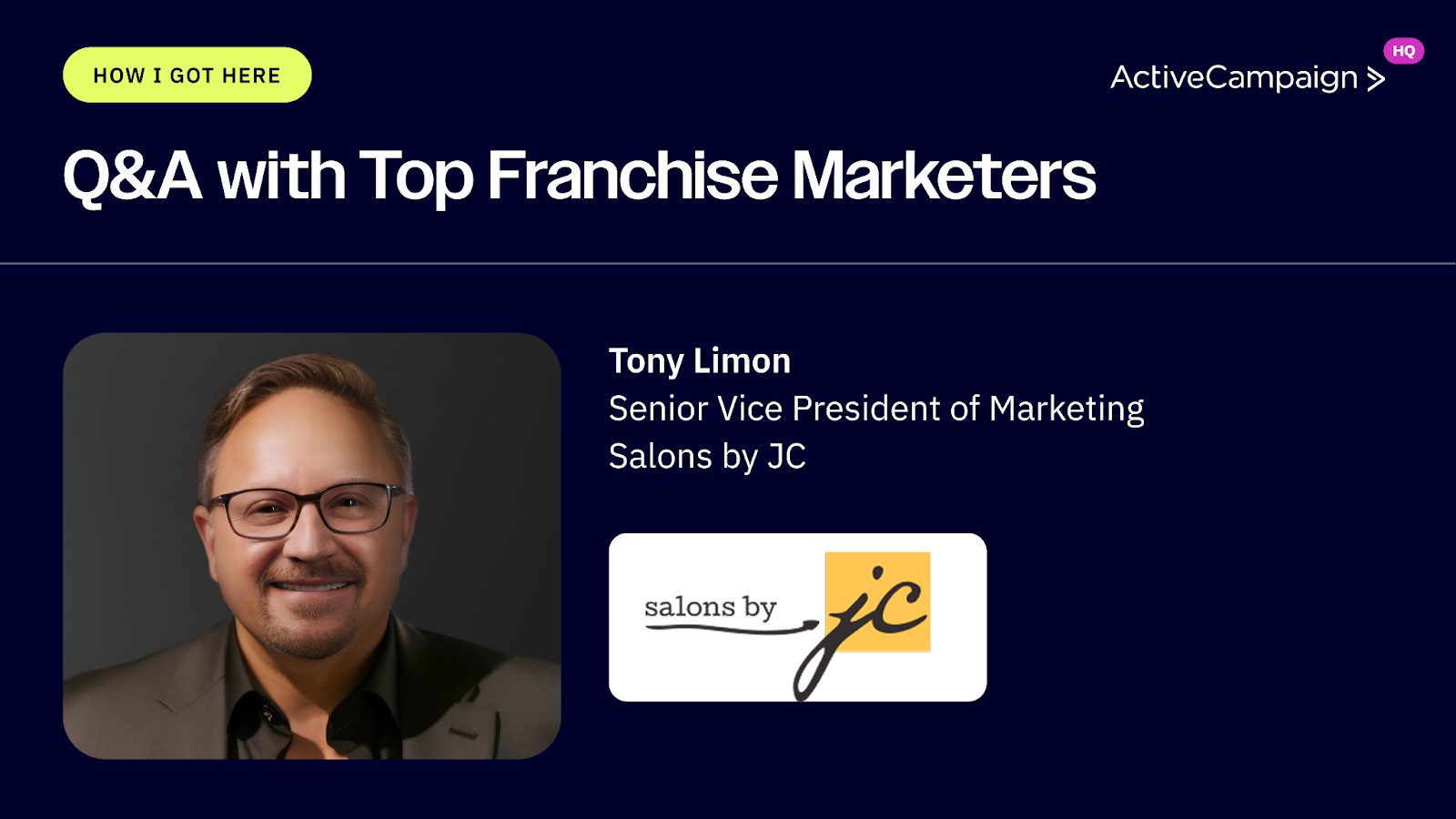Doesn’t it feel like everything you do could work just a little bit better?
You’ve created content, sent emails, and posted to social media consistently.
You’ve done everything you’re supposed to do.
But you still feel like you’re leaving something on the table.
Understanding how your audience becomes customers is hard. As your audience grows, it doesn’t get any easier.
The challenges you don’t feel in the beginning start to rear their heads as you grow. One of the most dangerous challenges is the idea of a “marketing funnel.”
What is a marketing funnel?
A marketing funnel is a common visualization that shows how people find businesses and turn into customers. It often describes the customer journey as beginning with awareness and ending with a purchase.
You will often see these three stages of the marketing funnel:
- Top of the Funnel (TOFU): Potential customers are “problem aware,” but aren’t sure what types of solutions may be out there for them.
- Middle of the Funnel (MOFU): Potential customers are “solution aware,” armed with the knowledge of a variety of possible solutions to their problem.
- Bottom of the Funnel (BOFU): Potential customers are “product aware,” seeing your product as one potential solution to their problem.
The funnel is one of the most commonly used models in marketing. It’s also:
- Over 120 years old, created in a time where cars were new and cities were still worried about how to clean up after horses.
- Created from the business’ point of view. It focuses on a business’ perspective of how to sell instead of a customer’s perspective of how people buy.
- Stops short. Because technology has changed, it’s easier for businesses to follow up with customers after they buy — but anything after the purchase is totally ignored by the traditional marketing funnel.
The marketing funnel is a common model, and parts of it are useful. But it’s outdated. How did it become so popular, which parts should you keep — and what should you do instead?
A (brief and non-boring) history of the marketing funnel
The “marketing funnel” has been around for 120+ years. It’s probably time for an update.
But why is the funnel so popular in the first place? Here’s a brief recap of its history, and why it’s been useful so far.
1898: E. St. Elmo Lewis outlined a theoretical customer journey, often being credited with coining the initial “AIDA” model. Lewis used phrases such as “attract attention, maintain interest, and create desire,” adding later the fourth term, “get action.”
Other notable events from 1898:
- Caleb Bradham creates a soft drink called Pepsi-Cola
- The Spanish-American war begins and ends
- Thomas Edison acquires a patent to mass-produce the lightbulb
1904: One of the first visual examples we see is actually referred to as the “sales funnel” shown here from Salesmanship Magazine editor, Frank Hutchinson Dukesmith.
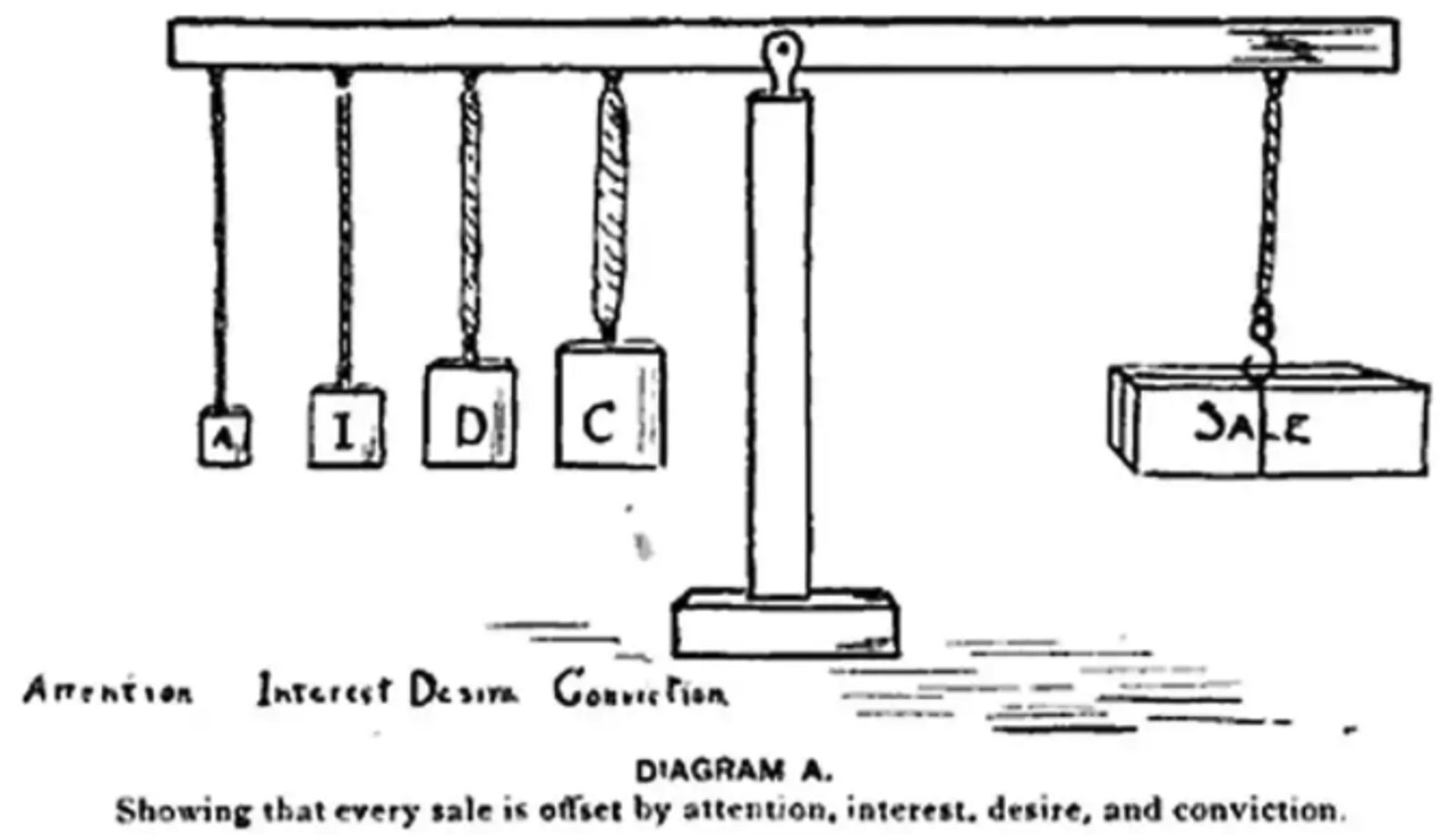
1910: John Dewey popularized the “buyer decision process.”
1924: William W. Townsend (why do they all have 3 names or a middle initial?) credits E. St. Elmo for the AIDA model in his book, Bond Salesmanship. Additionally, Townsend first visualized this model as a “funnel.”
1959: Arthur F. Peterson, in his book Pharmaceutical Selling, Detailing and Sales Training, visually shows the Attention, Interest, Desire, Action (AIDA) model that we see popularized today (source, Pharmaceutical Selling, Detailing and Sales Training)
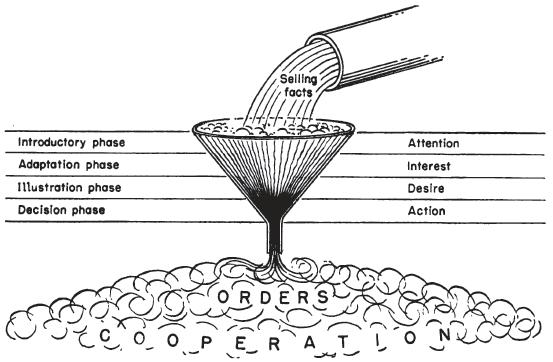
What are the stages of the AIDA model?
- Attention: Creating awareness that solutions similar to yours exist.
- Interest: Creating interest in your specific type of solution.
- Desire: Creating desire to use your specific solution.
- Action: Brings your customer to act on their desire, based on the interest and attention you’ve previously developed.
The AIDA funnel stood largely unchallenged for 50 years. Although it’s deeply flawed for modern marketers, breaking the purchase process into stages was revolutionary for its time.
As technology changed, the traditional marketing funnel started to morph. In the early 2000s, it became a slightly more sophisticated model known as “inbound marketing.”
What are the stages of the inbound marketing funnel?
“Inbound marketing” is a marketing method that emphasizes attracting new customers instead of blindly bombarding them with messages. It focuses on content creation as a method to draw in leads and persuade them into making a purchase.
Earlier forms of the marketing funnel may have resulted in an audience receiving marketing that they didn’t want (dubbed “outbound marketing”). Inbound marketing is based on reaching your audience when they are already looking for the answer to a problem.
Despite the buzz and focus on content creation, the inbound marketing funnel breaks down into four stages just like the traditional marketing funnel:
- Awareness: At this stage, your audience knows the problems and pains they have and needs to know solutions like yours exist. Here, our focus should be to create blog and social media content that empathizes with their needs to build awareness for our brand.
- Interest: At this stage, your audience knows that solutions like yours exist and needs to know how your specific solution solves their problem. In an inbound marketing funnel, we’ll create content that teaches them to solve their problem, while also showing how our specific solution works.
- Consideration: In the consideration stage, your audience is aware how your solution works, but needs to know if it's truly the best solution for them. The core content at this stage is most often comparison pages, case studies, customer success stories, and testimonials.
- Conversion: In the final inbound marketing stage, your audience is likely ready to make a commitment to your solution. They just need to know how, so we’ll leverage compelling sales pages, product pages, and pricing pages that show the value of your solution.
Inbound marketing adds more of the customer’s perspective. It focuses on answering customer questions and solving problems, which is definitely an improvement on the traditional marketing funnel.
But even in the last 20 years, the emphasis of marketing has changed. Inbound marketing is still from the business perspective. It still doesn’t differentiate between customers. And it still doesn’t say anything about what happens after a purchase.
At best, inbound marketing is an outdated model that:
- Treats everybody the same
- Stops after someone buys
- Loses the personal touch that we need (and our audience demands) in the future of marketing
It’s for these three core reasons that we need to forget generic messaging and forget the funnel entirely…
And focus on the customer lifecycle.
Why you should forget the funnel, and focus on customer lifecycle

The marketing funnel will always be flawed because it focuses on the business more than the customer.
From the customer’s perspective, the path to a purchase isn’t the neat, straight line that a marketing funnel implies.
Let’s face it: customer journeys are… messy.
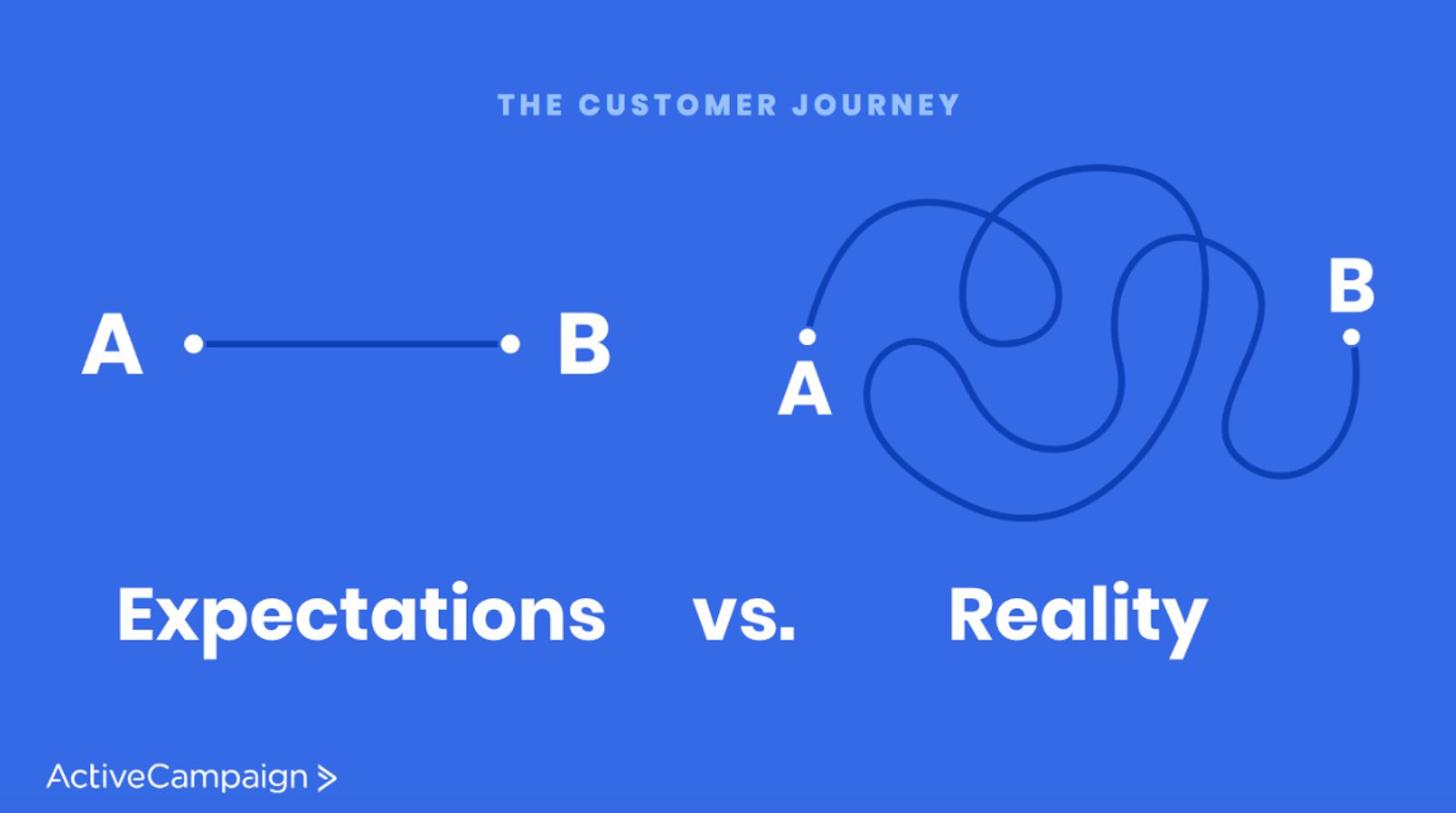
A customer doesn’t find out about your business (awareness), eagerly read your (interest) emails, do a bunch of other research (consideration), and then finally buy (conversion).
Some customers go through a process that simple. But for most customers, a purchase decision is much messier. Here’s one possible customer journey:
- Someone hears about your product on NPR
- They visit your website, but leave without purchasing or joining your email list
- You retarget them with ads on social media, but they still don’t buy
- 6 months later they have a problem that your product solves, and Google it
- They recognize your website and click on you, even though you’re the 4th link
- They add your product to a cart and give you their email address! But then they change their mind and still don’t purchase
- They start getting your emails, but mostly don’t open them
- A year later they see your Black Friday sales, remember your company, and finally buy
The “funnel” isn’t flexible enough to handle such a broad spectrum of interactions. Potential customers move forward and backwards in their journey, and the marketing funnel can’t account for that messiness. It also can’t tell you how to up-sell customers or ask for reviews after the first purchase.
But the customer lifecycle can.
The customer lifecycle is about understanding every touchpoint in a customer’s buying experience — and understanding that customers are different. What you say to a new customer isn’t the same as what you say to one of your superfans.
A new customer has just purchased from you for the first time, and it was one of your most expensive products. How do you personalize your interaction with them?
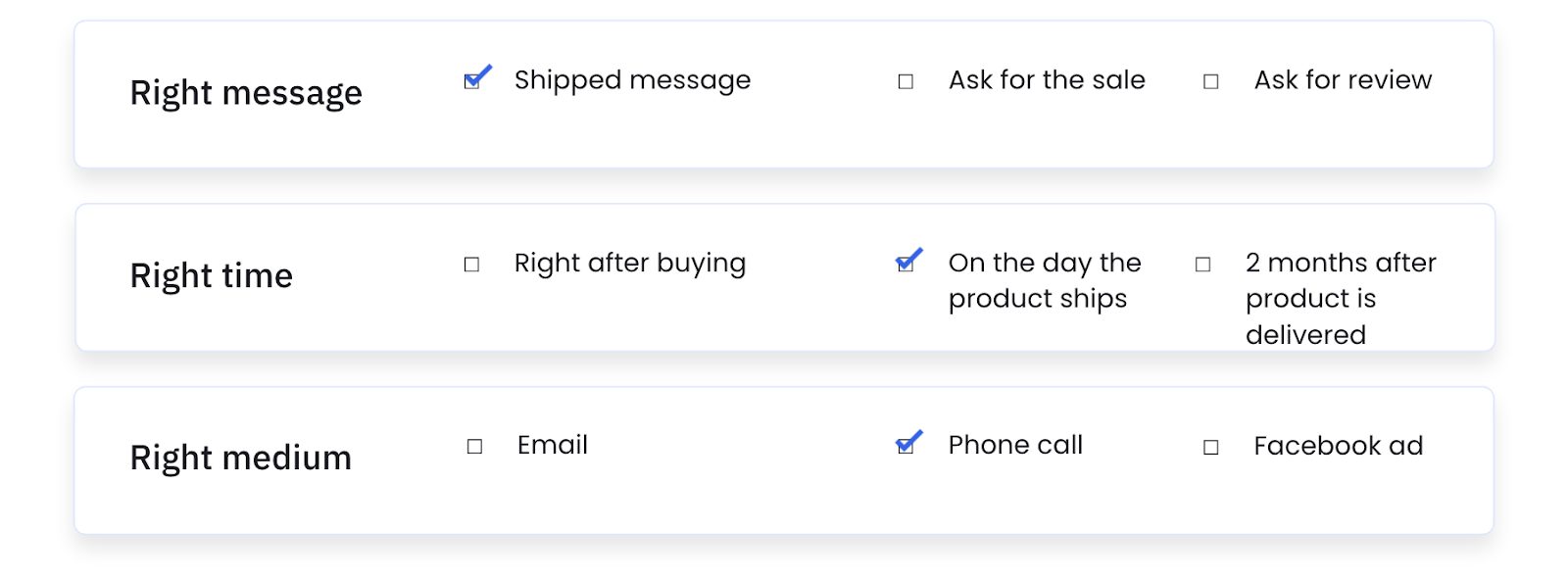
But a customer that’s just made their tenth purchase? They need something completely different.

This level of personalization leads your audience along a journey to becoming customers, repeat customers, and True Fans.
When you understand the customer lifecycle, you can see the most important moments in a customer’s journey. Here’s how to put the customer lifecycle into action today.
Tactics for every stage of the customer lifecycle

Reach & Engage
Goal:
Introduce ourselves and engage with relevant audiences that our solution has the best potential to help.
At this stage, most people will be “problem aware” and will know what kind of problems they’d like to solve, or have solved for them. You need to make sure those resources are discoverable where they search for them, and you engage with your audience from a place of empathy.
What to Create:
- Free “How To” Resources — articles / blog posts and videos
- Thought Leadership — podcast and ebooks (can also include articles)
Distribution Tactics:
- Search Marketing (SEO/organic and SEM/paid)
- Digital Marketing (forums, communities, Reddit, and Quora)
- Social Media (organic and paid)
- Events
Watch Out For:
The biggest mistake at this stage is chasing larger audiences that are farther from needing your solution. That wastes budget, sure, but it also wastes your (and your audience’s) most important resource : time.
Nurture & Educate
Goal:
In this second stage of the customer lifecycle, you exchange information with your future customers.
The customer shares more about themselves, and you match the information you give them with the information they need (based on the customer touchpoints of their unique journey).
What to Create:
- Free “How To” Resources — articles / blog posts, FAQs and videos
- Free “Relational” Resources — podcasts and webinars
- Opt-In Resources — checklists, newsletter, infographics, and templates
What to Track:
- Links clicked
- Emails opened
- Pages visited
Distribution Tactics:
- Search Marketing (SEO/organic and SEM/paid)
- Social Media (organic and paid)
- Marketing Automation
- Email Marketing
- CRM
Watch Out For:
Things can get complicated quickly as you move deeper into the customer lifecycle and start to use email marketing and marketing automation. The key here, and what makes this approach radically different from the traditional marketing funnel, is personalization.
You know that a person opened an email and clicked on an ebook. Should you wait a week to ask how they liked it? Probably not.
The core question you want to answer is: what content does this individual want, when and how do they want it, and what’s the best way to deliver it.
Convert & Close
Goal:
As you’ve built a strong relationship with an individual, helped them solve their problems, and answered their questions, it may be time for them to move out of an education cycle and into a buying cycle.
Your goal is to discover and implement the trigger that moves an individual closer to your product.
What to Create:
- Social Proof — whitepapers, embedded social media and testimonials
- Case Studies — public and privately available
- Demos — recorded, live, or in a group setting
- Public pricing
- Consultations
What to Track:
- Links clicked
- Emails opened
- Pages visited
Distribution Tactics:
- Search Marketing (SEO/organic and SEM/paid)
- Social Media (paid, specifically retargeting)
- Marketing Automation
- Email Marketing
- CRM
Watch Out For:
If your business focuses more on relationship-based selling (common in B2B), your CRM is going to be crucial in understanding your individual customer needs and, when it makes sense, helping them move toward a purchase.
If your business focuses more on transactional selling (common in B2C / ecommerce), a more sales-focused CTA inside your marketing automation will be key.
Support & Grow
Goal:
A customer has purchased from you. But unlike a marketing funnel, the customer lifecycle continues to focus on that individual — which allows them to grow into an advocate for your brand.
What to Create:
- Membership communities
- Online courses
- Enhanced access to the company
- Affiliate and partner programs
- Influencer and ambassador programs
What to Track:
- Links clicked
- Emails opened
- Pages visited
Distribution Tactics:
- Marketing Automation
- Email Marketing
- CRM
Watch Out For:
Use all of the above data to consider when to ask for a referral, a review, a testimonial, or when to look at building out a larger case study. The customer lifecycle loops back into Reach & Engage as we support the customer using the products and solutions they’ve purchased increasing retention and advocacy.
Let’s fix your marketing funnel, together
The marketing funnel is, at best, an outdated way to approach marketing.
By treating all customers the same (without personalization), neglecting post-purchase stages of the customer lifecycle and encouraging robot marketing, marketing “funnels” lose the personal touch necessary in the future of marketing.
By focusing on the broader customer lifecycle, businesses create a relational flywheel that starts with the first engagement and never ends.

